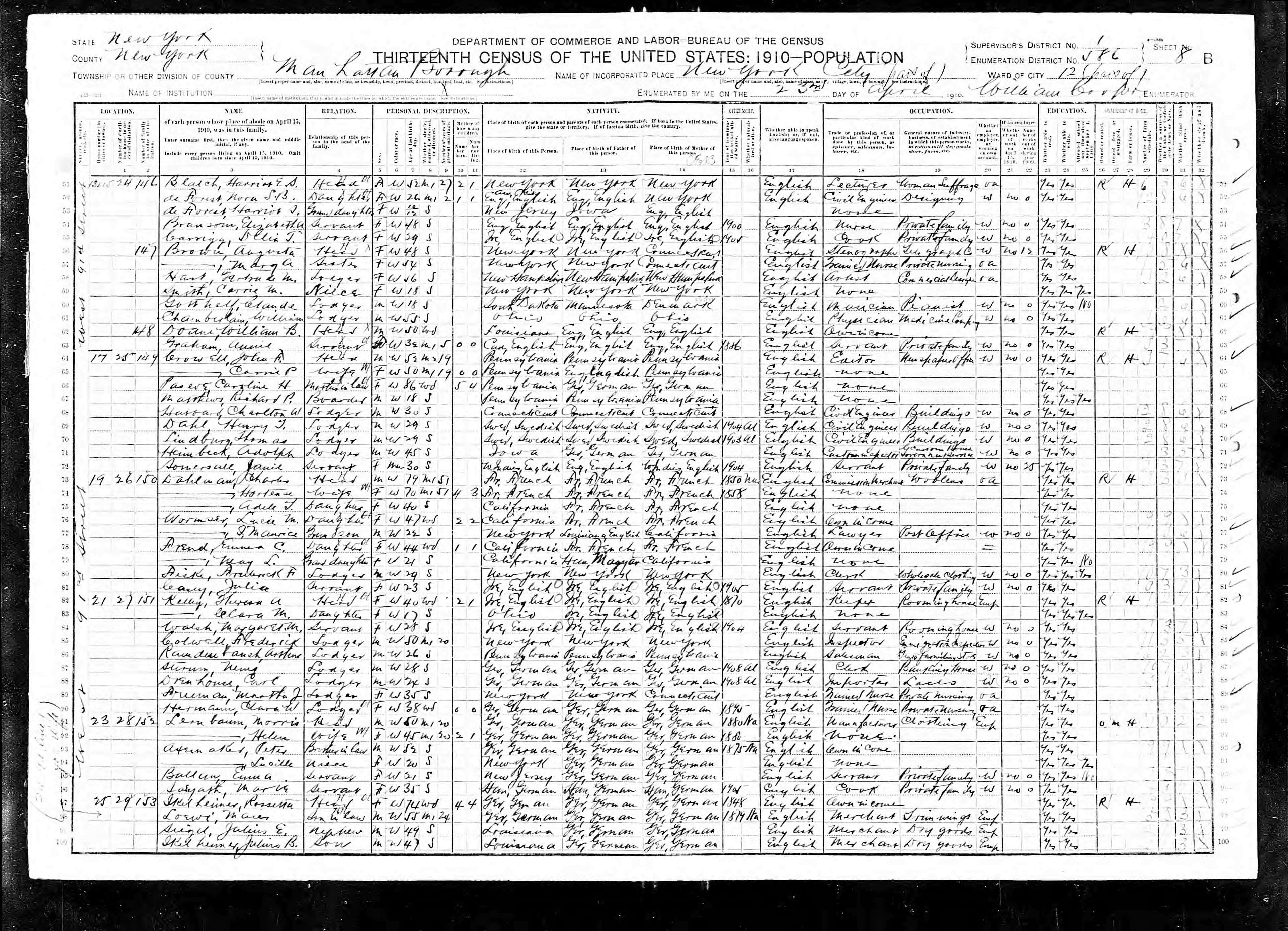1910 Census Listing for Harriot Stanton Blatch
4/23/1910
Add to Favorites:
Add all page(s) of this document to activity:

This 1910 Federal census page lists suffragist Harriot Stanton Blatch and her household, starting on the top line (line 51). Blatch was an activist and the daughter of Elizabeth Cady Stanton. The census lists her occupation as a woman suffrage lecturer.
In 1906, Blatch created the Equality League for Self-Supporting Women for professional and industrial working women, later called the Women’s Political Union. Taking the lead from labor unions, Blatch organized the first large-scale suffrage parade in New York City in 1913.
She married a man from the United Kingdom, moved to England, and lost her American citizenship — according to the 1907 Expatriation Act, "any American woman who marries a foreigner shall take the nationality of her husband." After her husband's death, she moved back to America and petitioned to become a U.S. citizen again in 1911. (The Cable Act of 1922, known as the "Married Women’s Independent Nationality Act" or "Married Women’s Act," repealed the 1907 Expatriation Act.)
In 1906, Blatch created the Equality League for Self-Supporting Women for professional and industrial working women, later called the Women’s Political Union. Taking the lead from labor unions, Blatch organized the first large-scale suffrage parade in New York City in 1913.
She married a man from the United Kingdom, moved to England, and lost her American citizenship — according to the 1907 Expatriation Act, "any American woman who marries a foreigner shall take the nationality of her husband." After her husband's death, she moved back to America and petitioned to become a U.S. citizen again in 1911. (The Cable Act of 1922, known as the "Married Women’s Independent Nationality Act" or "Married Women’s Act," repealed the 1907 Expatriation Act.)
This primary source comes from the Records of the Bureau of the Census.
Full Citation: United States Federal Census Listing for Harriot Stanton Blatch; 4/23/1910; Copies of the 1900 - 1950 Population Schedules, 1940 - 1952; Records of the Bureau of the Census, Record Group 29; National Archives Building, Washington, DC. [Online Version, https://docsteach.org/documents/document/harriot-stanton-blatch-census, April 17, 2024]Rights: Public Domain, Free of Known Copyright Restrictions. Learn more on our privacy and legal page.



